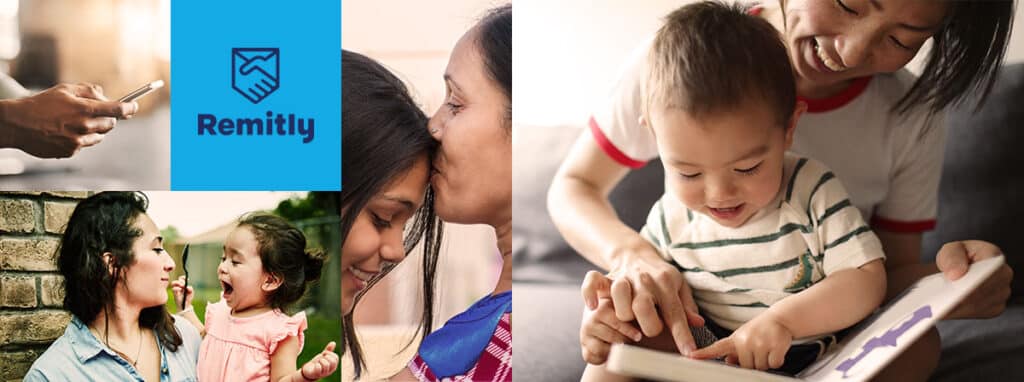Sending money abroad or back home? You might need a SWIFT code so your financial institution or money transfer company, like Remitly, will know where to send your funds.
Let’s look at what a SWIFT code is, the differences between them and other types of codes, and how to use one.
What is a SWIFT code?
The SWIFT code identifies the bank, branch, and country to which the account belongs (or is registered) to. SWIFT stands for Society for Worldwide Interbank Financial Telecommunications (or SWIFT) and is a messaging network used by financial institutions to securely transmit information regarding domestic and international transactions using a system of codes.
The point of the code is to make sure your money will go to the right place when you transfer money. Banks and money transfer companies will typically require one when you fill out a remittance form.
Formed in 1973, the SWIFT network provides a standardized way for banks to transmit information to each other so that they can conduct financial transactions. How it works is that the network helps to pass on information through an intermediary institution before the money arrives at the final destination (aka your recipient’s account).
Since 2014, the network has over 11,000 connected financial institutions in over 200 countries where they can exchange information regarding financial details. In 2014 it exchanged over 5.6 billion messages – pretty impressive.
Why do I need to use a SWIFT code?
A SWIFT code is used to facilitate the transfer of funds from one financial institution to another. Think of it as when you mail a letter or package to someone — you need the correct address (including the street name, building number, and country) in order for it to get to the intended recipient.
A unique SWIFT code is like an address or destination to which your money will be sent. It’s an identifier for the specific branch of a bank, though it’s not the same as an individual account number.
You need a correct SWIFT code if you’re sending from bank to bank, such as from your bank in Canada to your relative’s bank account with BanCoppel in Mexico City.
In that case, once you pay the necessary fees and sign any required documents, your bank will send out a SWIFT message about your specific international money transfer details via its secure network to BanCoppel (including the specific branch).
Then, the money will be transferred and credited to your family member’s account once the message about the incoming payment is acknowledged and received.
How will I know what a SWIFT code looks like?
A SWIFT code is an eight to 11-digit code comprised of four components:
- Bank code: The bank code is four letters that look like a shortened variation of the bank’s name.
- Country code: The country code comes next and is two letters that represent the country where the bank is located.
- Location code: The next two numbers or letters are the location code and show you the city of the bank’s headquarters.
- Branch code: The final part of the SWIFT code is optional. Known as the branch code, it consists of three digits indicating a bank’s specific branch rather than just the bank’s main office. (This is important if not all branches can receive SWIFT transfers.)
For example, the SWIFT code “BOFAUS3N” is from the Bank of America, indicated by the first four letters, BOFA, the abbreviation of the bank’s name. This example doesn’t have a branch code.
The next two letters represent the U.S., and the last two characters are for their bank headquarters.
Is a SWIFT code the same as a BIC?
A BIC stands for Bank Identifier Code, and it’s technically the same thing as a SWIFT code. You can use BIC and SWIFT codes interchangeably to identify banks and financial institutions.
SWIFT and BIC codes both consist of letters and numbers identifying the bank, branch, and country of a registered account.
How is a SWIFT code different from an IBAN?
Both SWIFT BIC codes and IBANs are important to identify different components of your recipient’s financial information.
While a SWIFT code identifies a specific bank when conducting an international transaction, an IBAN (or International Bank Account Number) identifies someone’s specific account within the bank for their specific transaction.
Many countries use IBAN’s 34-character code made up of letters and numbers for international transfers.
In fact, the SWIFT network has helped to standardize IBAN, ensuring it’s easier to send money abroad.
When do I use a SWIFT code vs an IBAN?
All of these codes are necessary when sending money internationally through banks and financial institutions that use the SWIFT system. These identifying codes ensure a successful (hopefully quick) transfer across international borders.
SWIFT codes offer a way for banks to share a huge amount of financial information, including the status of the sender’s and recipient’s accounts and any other relevant details regarding the transfer.
The IBAN also ensures that the bank can access the recipient’s individual account information.
Of course, the codes required will depend on your bank or financial institution, your recipient’s bank, the country where you’re originating the transfer, as well as where it is received. Not all banks have both SWIFT codes or IBANs, so it’s important to figure out what you’ll need to use for your international transfer.
In any case, with either of these codes, the chances of your transfer being successful will be much higher.
How can I find SWIFT codes?
There are a few ways to find SWIFT codes. The most obvious method is to contact your bank (if you’re receiving money internationally) and ask for it. In many cases, your bank should have this information marked on their website.
Some banks will have different SWIFT network codes for different currencies — one for domestic transactions and international currencies — so make sure you double-check. For example, Bank of America has two separate SWIFT codes.
Another way to find out is to log into your bank account online, head to your account summary page (or its equivalent), and look at your account details. In many cases, you’ll be able to see your branch address, account number, and SWIFT code.
Don’t forget your bank account statements house important information about your account. Check to see if the bank’s SWIFT code appears anywhere on the bank statement, such as on the back.
If you’re the one who is conducting the SWIFT transaction, ask the recipient to use the same options above to find out the information.
In some cases, your bank or money transfer companies already have this information on hand, so all you have to do is log into your account and enter the person you’re sending money to, the bank name, and the location.
There are also SWIFT BIC code finder websites whose sole purpose is to help you find the relevant ones from banks all over the world before conducting international money transfers.
Keep in mind not all of these websites have the most up-to-date information, so use a SWIFT and BIC codes checker to validate the information or contact the bank directly before making international payments or transfers.
For quick reference, here are some SWIFT codes for major banks.
SWIFT codes finder for major banks

Bank of America
- BOFAUS3N (for U.S. dollars or unknown currency)
- BOFAUS6S (for foreign currency)
Chase
If you’re sending an international transfer, use the code CHASUS33.
Citibank
SWIFT codes for Citibank will depend on the recipient’s country.
Some locations include:
- U.S. – CITIUS33
- United Kingdom – CITIGB2L
- Greece – CITIGRAA
- India – CITIINBX
- Singapore – CITISGSG
- Hong Kong – CITIHKHX
- Canada – CITICATT
- New Zealand – CITINZ2X
- Thailand – CITITHBX
- South Africa – CITIZAJX
Emirates NBD
Bank account holders should use EBILAEAD to receive money.
HSBC
Codes are different depending on the country of your HSBC bank account. The following are a few codes from select countries:
- U.S. – MRMDUS33
- Hong Kong – HSBCHKHHHKH
- England – MIDLGB22
Icici
Use the SWIFT code ICICINBBNRI to send money to any ICICI account holder.
Lloyds Bank
If you’re sending money to a Lloyds Bank customer, use the code LOYDGB2L.
Rabobank
This cooperative bank in the Netherlands uses the SWIFT code RABONL2U.
Scotiabank
If you’re transferring money to a Scotiabank account holder, use the code NOSCCATT.
Union Bank
Send transfers to customers of Union Bank using the code BOFCUS33MPK.
Wells Fargo
Codes will differ depending on the location of the receiving bank.
Here are a few select ones:
- Los Angeles, U.S. – PNBPUS6L
- New York, U.S. – PNBPUS3NNYC
- Winston-Salem, U.S. – PNBPUS33SLC
- Philadelphia, U.S. – PNBPUS33 or PNBPUS33PHL
- Dublin, Ireland – PNBPIE2D
- London, England – PNBPGB2L
- Seoul, South Korea – PNBPKRSX
- Singapore – PNBPSGSG
Do all banks have a SWIFT code?

The short answer is no — not all banks have SWIFT or BIC codes. It could be that many smaller banks and credit unions choose not to connect to the Society for Worldwide Interbank Financial Telecommunication network, meaning they don’t have any routing codes to send and receive money internationally.
Even if your bank does use SWIFT codes, it doesn’t mean your specific branch has one, either. It might be that only the bank’s head office or select branches have associated SWIFT or BIC codes.
If your bank doesn’t have a code, it may use another bank to wire money, acting as an intermediary. Or, your bank may not offer the ability to make international payments via wire transfer.
Of course, bank transfers are only one of many ways to send money abroad, which can be useful if SWIFT codes aren’t possible or your loved one’s bank can’t receive international wire transfers.
Do I need a SWIFT code for Remitly?
Money transfer apps like Remitly don’t usually require a SWIFT code to complete your transaction. We make it easy for you to send a transfer to friends and family in countries like the Philippines, Mexico, or India.
Here’s how to use our service:
- For first-time users, download the Remitly app and create an account. Then select your destination country.
- Enter the amount you wish to send as well.
- Select your preferred method of delivery: bank deposit, cash pickup, mobile wallet, or even home delivery in some countries.
- Enter your recipient’s information, like their name and address. You will need their bank details if you’re sending to their account, but their bank’s routing and account numbers are usually sufficient. Then, enter your information as the sender.
- Select your method of payment and enter your payment details.
You will need to provide a SWIFT code or a BIC code only for a SEPA transfer in the eurozone. That is an Economy transfer from a bank account to another bank account (rather than from your debit or credit card).
Remitly: A better way to transfer money internationally
Sending money to your loved ones should be a smooth process, so consider Remitly.
You can conduct transfers inside their app to countries worldwide, whether to your loved one’s account or mobile wallet. Millions of people trust Remitly to ensure safe and secure transactions through their bank-level security with available technologies. Plus, money arrives quickly, so there’s less time spent wondering if your money will get there and if it is being put to use for its intended purpose.


